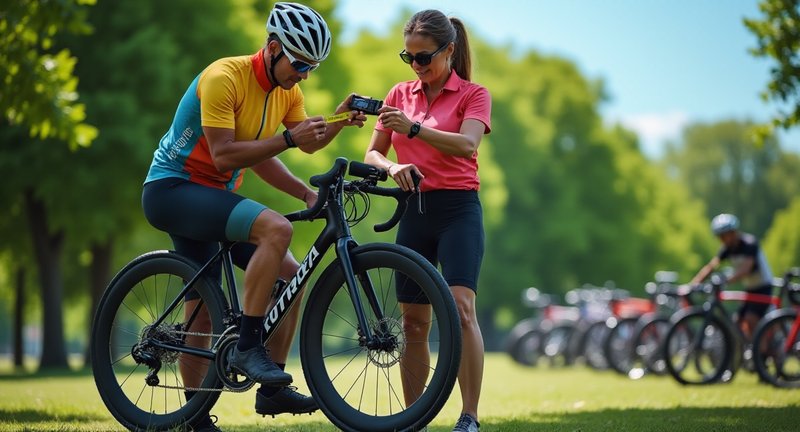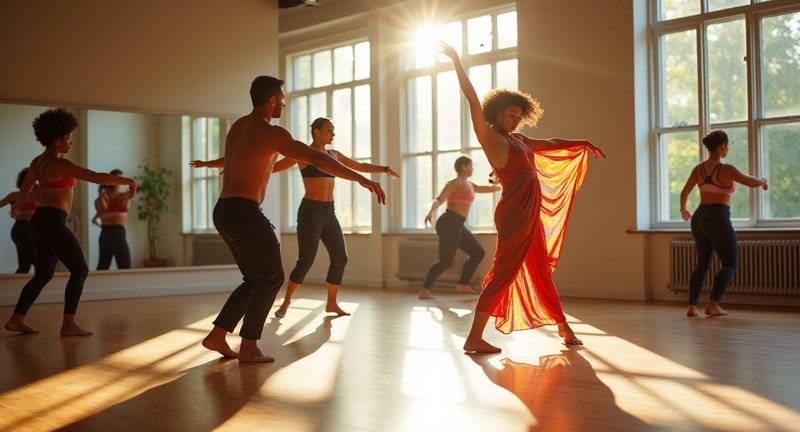A First Look at Bike Measurements
When I first dove into the world of cycling, understanding Bike Measurements was like unlocking the blueprint of your ride. It’s more than just hopping on and pedaling. Every inch, every angle matters. So, let’s break down the key components you need to pay attention to.
First up, frame size. This is probably the most critical aspect of bicycle dimensions. It’s usually measured from the center of the crank (that’s where the pedals attach) to the top of the seat tube. It dictates how comfortable and efficient your ride will be. A poorly sized frame? You’ll feel it in your back, trust me.
Then, there’s top tube length. This is the horizontal distance between the seat and the handlebar. It controls your reach and affects how upright or stretched out you are on the bike. Too long, and you’ll feel like you’re doing yoga mid-ride. Too short, and you’ll be crunched up like a turtle.

We also can’t forget seat height. It’s the vertical distance from the bottom bracket to the top of the saddle. Getting this right is like finding the sweet spot your legs will thank you on those long rides.
Here’s a quick checklist when thinking about Cycle sizing:
- Frame size: Center of crank to seat tube
- Top tube length: Seat to handlebar distance
- Seat height: Saddle to bottom bracket measurement
- Handlebar width: As wide as your shoulders, or close enough
I learned the hard way that even a small tweak to your bike’s dimensions can make a massive difference. So take your time, measure twice, ride smooth.
Understanding Bike Measurements
When I first started cycling, understanding the various dimensions of a bike felt a bit like cracking a secret code. Every little measurement influences how the bike feels beneath you, from the length of the frame to the height of the handlebars. It’s a puzzle, but once you unlock it, riding becomes an entirely different experience.
What surprised me most was how even the smallest adjustment can transform the ride. A seat that’s just an inch too high or a frame size that’s slightly off can make long rides uncomfortable or even painful. Trust me, your knees and back will thank you later if you get these details right from the start.
There’s also a personal touch to finding your ideal fit. No two cyclists are exactly the same, and that’s where the magic happens. You’ll notice when everything clicks into place, and suddenly, the ride feels effortless. It’s like you’re in sync with the bike, as if it was made just for you.

I’ve learned that it’s not just about comfort, though. It’s also about efficiency. If your bike fits like a glove, you’ll find yourself moving faster with less effort. Those subtle tweaks can make a world of difference, especially on longer routes or tougher trails.
So, if you’re serious about your biking adventures, take the time to get acquainted with the dimensions of your ride. It’s worth the effort, and your future self will definitely be grateful.
The Importance of Proper Bicycle Sizing
When dealing with cycling, there’s one often-overlooked factor that can make or break the entire experience: the right bike fit. Trust me, I’ve been through the ups and downs of riding with a poorly sized bicycle, and let’s just say, my knees didn’t thank me for it. A properly sized bike can transform your ride from a struggle to a smooth, enjoyable glide. It’s like putting on shoes that fit just right everything just clicks.
First, let’s talk about why sizing matters. A bike that’s too big or too small can cause all sorts of discomfort and even lead to injuries over time. You want to avoid numb hands, aching back, or stiff knees, right? The correct fit means your bike works with your body, not against it.
Here’s what to keep in mind:
- Frame size: This is the backbone of your bike, and it’s crucial to get it right. An improperly sized frame can throw off your whole balance.
- Saddle height: Too high or too low, and your legs will feel like they’re working overtime. Adjust it so your knee is slightly bent when the pedal is at its lowest.
- Handlebar reach: Too far away, and you’ll be over-stretched, too close, and you’ll feel cramped. You want to feel relaxed, not hunched over like a turtle.
- Crank length: This often gets ignored, but the length of the crank arms can affect your pedaling efficiency.
A well-sized bike lets you ride longer and more comfortably, keeping you pain-free and, most importantly, loving the ride. If you haven’t already taken the time to dial in your sizing, it’s worth every minute.
How to Measure Your Height for Bike Fit
When you’re getting ready to find your perfect ride, knowing your height is where it all begins. Standing tall against a wall, with a book balanced on your head, can give you a surprisingly accurate measurement. It’s funny how something so simple can make such a big difference.
The key is to stand as naturally as possible, feet flat and spine straight. It’s tempting to tilt your chin up, but that little lift can throw things off. Trust me, I’ve learned that the hard way.
Don’t forget, it’s not just about your overall height. Your inseam plays a huge role too. Measuring from the ground to where your legs meet your torso gives you that golden number. I like to think of it as the ‘secret sauce’ to getting your bike dialed in.
If you’ve ever had a ride that felt slightly off, you know what I’m talking about. A few millimeters here or there can be the difference between a smooth cruise and constant discomfort. Take the time to measure properly it’s one of those little details that rewards you every time you pedal.
And hey, if you’re unsure, grab a friend to help. A second set of eyes can catch things you might miss. Plus, it’s more fun to make this a two-person job, even if it’s just for the laughs when balancing that book on your head.
Determining Your Inseam Length
When it comes to determining your inseam length, I’ve learned that it’s not just about knowing your height. It’s like figuring out your unique key for unlocking a perfect ride. Trust me, getting this right makes all the difference in the world.
Grab a book (yep, you read that right) and find a flat wall. Stand straight with your feet shoulder-width apart, holding the book between your legs as if it were your saddle. The spine of the book should be pressed firmly against you.
Next, measure from the floor to the top edge of the book, where it meets your body. That’s your inseam! But don’t just rely on a quick guess being precise is crucial. It’s kind of like dialing in the perfect recipe too much or too little of something, and you’ll be off.
I’ve found that different riding styles benefit from slightly different inseam lengths. For a more aggressive, aerodynamic position, I might tweak mine a bit shorter. But for comfort on long rides? You bet I’m going for a bit more leg extension.
So, grab that tape measure, take a few minutes, and you’ll be one step closer to a ride that feels just right. After all, there’s no substitute for a ride that fits you like a glove.
Understanding Top Tube Length
Top tube length – it’s not just a number on a chart. It’s one of those things that can completely change how your ride feels. From my experience, dialing in the right top tube length can be the difference between a bike that feels like an extension of your body and one that feels like you’re wrestling a wild beast.
When your top tube length is too long, you might find yourself overstretched, your arms reaching uncomfortably forward, sapping your energy. On the other hand, a top tube that’s too short can make the ride feel cramped, limiting your control and comfort. There’s a sweet spot, and finding it can make a world of difference in your posture and performance.
I’ve learned that top tube length isn’t just about your height or inseam. It’s about how you want to ride. Do you prefer a more aggressive, aerodynamic stance? A longer top tube might be your friend. But if comfort and a relaxed position are your priorities, a shorter top tube can offer that more upright feel.
It’s also worth remembering that this isn’t something that stands alone. Handlebar height, saddle position, and even stem length work in harmony with the top tube. It’s almost like solving a puzzle, where every piece affects the next.
In the end, top tube length comes down to personal preference. Don’t just rely on a guide – feel it out for yourself. Trust me, once you hit that sweet spot, you’ll know.
The Role of Seat Tube Length
Let’s dive into the humble seat tube length. It often gets overshadowed by the more glamorous aspects of bike geometry, but trust me, it plays a starring role. Your connection to the bike starts here, determining how comfortable and powerful you feel on those pedals.
In my experience, this single measurement can make or break your ride. When the seat tube is too short or too long, you’ll feel like Goldilocks either scrunched up or awkwardly overextended. That perfect length allows you to strike the right balance between power and efficiency, letting your legs move freely without straining.
Now, I’ve seen riders obsess over top tube length, but forget the seat tube altogether. Big mistake. Seat tube length isn’t just about how high your saddle goes. It’s about the relationship between your hips, legs, and the rest of the frame. This part of the bike ensures your power output is optimized. If your position is off, even slightly, those long rides turn into exhausting battles.
One time, I adjusted my seat height by just a centimeter yes, a centimeter and the difference was mind-blowing. Suddenly, hills felt less steep, and I wasn’t wasting energy shifting around in the saddle. That’s the magic of getting your seat tube length dialed in just right.
So next time you’re thinking about your ride setup, give the seat tube length the attention it deserves. It’s a game-changer that can make every pedal stroke feel smoother, stronger, and just plain better.
Evaluating Handlebar Height
With regard to evaluating handlebar height, it’s a delicate balance between comfort and control. From my own experience, the slightest tweak can make all the difference in how you feel on the bike, especially on longer rides.
First, let’s talk about why this matters. Handlebar height is not just a matter of personal preference it directly affects your posture and how your body connects with the bike. Too high, and you may lose aerodynamic efficiency; too low, and your wrists and back could start protesting halfway through your ride.
I learned the hard way that there’s no universal formula here. It’s all about Bike Measurements that are tailored to your unique build. A few millimeters can transform how responsive your bike feels, so don’t overlook this seemingly small adjustment.
One thing I’ve noticed is that beginner cyclists often default to whatever comes out of the shop. But trust me, if your handlebars aren’t properly set, you’re limiting your potential. Start experimenting by adjusting the stem, and don’t be afraid to revisit your setup every season your body and riding style might change over time.
As a matter of fact, pay attention to how your body reacts during and after rides. If your neck’s stiff or your shoulders ache, it might be a sign your handlebar height is off. Dialing in those Bicycle fitting dimensions could mean the difference between a ride that’s a grind and one that’s a breeze.
Standover Height Explained
Standover height is one of those details that can make or break your ride experience, but it’s often overlooked. Trust me, if you’ve ever had to come to a quick stop and found yourself uncomfortably perched, you know how crucial this is.
So, what exactly is standover height? It’s the distance between the ground and the top tube of your bike, the horizontal bar running from the seat to the handlebars. When you’re standing flat-footed over the bike, ideally you want a small but comfortable gap between your body and the top tube.
Why does it matter? Here’s the deal: having the right standover height can make mounting and dismounting your bike easier and safer. Too little clearance, and you risk some painful mishaps when stopping suddenly. Too much, and the bike may feel too big or unwieldy.
To figure out if your bike has the right standover height for you, try this:
- Stand over your bike, feet flat on the ground.
- Measure the gap between your body and the top tube about 1 to 2 inches (2.5 to 5 cm) is a good rule of thumb.
- If the gap is too tight, the frame might be too large. Too much room, and the frame could be too small.
There are also a few variations depending on the type of bike you’re riding. Road bikes tend to have less clearance, while mountain bikes offer more for rough terrain. If you’re into more adventurous rides, that extra space can be a lifesaver.
Getting the right standover height may seem minor, but it dramatically affects how confident and comfortable you feel on the bike. And that’s really what matters, right?
The Impact of Frame Size on Performance
In the context of cycling, the frame size can feel like the unsung hero in your performance journey. In my early days of riding, I didn’t give much thought to how this seemingly mundane detail affected my ride. Oh, how naive I was!
A well-fitted frame can transform your cycling experience from a struggle into pure joy. It’s like finding that perfect pair of shoes you didn’t realize how much discomfort you were enduring until you slipped into something just right. The connection between your body and the bike becomes seamless, allowing you to glide effortlessly down the road.
If the frame is too large, you might find yourself stretching like a cat trying to reach a high shelf. On the flip side, a small frame can make you feel cramped, as if you’re trying to fit into a child’s playhouse. Neither scenario is conducive to optimal performance.
From my experience, when the frame aligns with your body, you unlock a newfound power in your legs. Every pedal stroke feels efficient, almost as if you’re dancing on the bike rather than simply riding it. You’re no longer fighting against an ill-suited machine; instead, you’re in harmony with it.
So, before you embark on your next cycling adventure, take a moment to consider how frame size affects your ride. A tailored fit is more than just comfort; it can be the difference between a casual outing and an exhilarating journey that leaves you craving more.
Choosing the Right Wheel Size
Choosing the right wheel size for your bike is like picking the perfect pair of shoes. It’s all about comfort, style, and the adventures that await you.
When I first dove into the cycling world, I was overwhelmed by the myriad of options. I learned quickly that larger wheels glide over rough terrain like a hot knife through butter, while smaller ones are nimble and agile, perfect for city streets.
One day, I found myself on a winding mountain trail with a set of smaller wheels. I nearly wept with frustration as I struggled to navigate the rocky path. The next week, I upgraded to a larger size, and it was as if I had discovered the secret passage to biking bliss.
If you enjoy cruising through the park on smooth paths, those bigger wheels will serve you well. But if darting in and out of traffic gets your adrenaline pumping, the smaller wheels may just be your best friend.
As I continued to explore, I realized that wheel size also impacts your speed. It’s a delicate dance between efficiency and control. Trust me; you’ll want to find that sweet spot that matches your riding style.
Don’t forget to consider your body size, too. A petite frame on an oversized wheel can feel like trying to dance in clown shoes awkward and unbalanced.
Also, it’s about finding what feels right for you. Experiment, ride, and don’t be afraid to mix it up. Your perfect wheels are out there, waiting for you to take them for a spin.
A Comprehensive Look at Bike Measurements
As it relates to cycling, understanding the nuances of sizing can feel like deciphering an ancient language. Each component of your two-wheeled companion has its own set of dimensions, and getting them right is crucial for comfort and efficiency.
Imagine gliding down a sunlit trail, the wind ruffling your hair. If your ride fits like a glove, every pedal stroke feels like poetry in motion. The length of the frame, the height of the saddle, and even the width of the handlebars all play into this intricate dance of physics and ergonomics.
I remember my first ride on a well-fitted bike. It was like stepping into a tailor-made suit. The handlebars were just the right height, allowing me to maintain a relaxed posture while my legs hummed with energy, efficiently turning the cranks.

But it’s not just about finding the perfect fit. There’s a bit of science involved too! The distance between your seat and pedals affects your power output. Too far, and you risk straining muscles; too close, and you’ll struggle for leverage.
As you embark on your cycling journey, don’t shy away from experimenting. Adjusting the components can unveil a world of possibilities. Don’t be afraid to try different setups; sometimes, the most unexpected changes lead to the most delightful results.
So, the next time you hop on your bike, take a moment to consider how the different dimensions affect your ride. You’ll discover that even the smallest tweaks can transform your experience from ordinary to extraordinary.
How to Measure Your Reach
As it relates to measuring your reach on two wheels, it’s not just about numbers; it’s about unlocking the full potential of your cycling experience. I remember the first time I attempted to dial in my setup, and it felt like piecing together a puzzle that held the secret to a smoother ride. Here’s how I approached it:
1. Understanding Your Body Proportions
- Arm Length: Extend your arms out straight. This is a vital component that affects how far you can comfortably reach the handlebars.
- Torso Length: Measure from the top of your shoulder to your hip bone. This will guide your saddle height and position.
- Leg Length: This is crucial for pedal efficiency. Stand with your back against a wall, and measure from your hip down to the floor.
2. Finding the Right Tools
- A flexible tape measure is your best friend here.
- A friend or a mirror can help you get those tricky angles right.
3. Setting Up Your Measurements
- Saddle Height: Ideally, your leg should have a slight bend at the knee when the pedal is at its lowest point.
- Saddle Position: Slide your saddle back or forward until your knee is directly above the pedal when it’s in the 3 o’clock position.
- Handlebar Height: This often depends on your riding style. For racing, you might prefer a lower position; for leisure rides, go higher for comfort.
4. Test and Tweak
- Once you’ve got the measurements, it’s time to hit the road. Pay attention to how your body feels. A good fit means less fatigue and more joy.
- Don’t hesitate to adjust things after your initial rides. It’s all about personal comfort!
Trust me, getting these details right transforms your cycling journey from a mundane task into an exhilarating adventure!
Adjusting Saddle Position for Comfort
Ah, the saddle! It’s often the unsung hero of our cycling adventures, yet its position can make or break your ride. Adjusting the saddle position for comfort isn’t just about making a minor tweak; it’s like fine-tuning a musical instrument.
When I first started cycling, I thought I could just hop on and go. But after a few bumpy rides, I quickly learned that the saddle height and tilt could either send me gliding smoothly or make me feel like I was riding a jackhammer. A few degrees here or there can change everything!
It’s essential to find that sweet spot. I remember the first time I adjusted my saddle height it was as if I had unlocked a new gear. My legs felt more powerful, and suddenly those long rides didn’t seem like a daunting task.
Don’t be afraid to experiment! Sometimes, shifting the saddle slightly forward or backward can enhance your pedaling efficiency. I once moved mine just an inch forward, and it felt like I had turbocharged my bike!
And let’s not forget about saddle tilt. A slight upward tilt can relieve pressure on your sensitive bits, while a downward tilt might offer a more aggressive riding position. Just keep in mind that comfort should always be your guiding star.
So, grab that wrench and give your saddle a little love. After all, your bike is an extension of yourself, and you deserve a ride that feels like a gentle caress, not a wrestling match. Happy cycling!
Common Mistakes in Sizing Your Bike
When I first ventured into the world of cycling, sizing my ride felt like decoding an ancient language. One common blunder is believing that all bikes are created equal in terms of fit. Trust me, it’s not one-size-fits-all.
Another pitfall is focusing solely on height. While your stature plays a role, it’s essential to consider your inseam and reach. Think of it as crafting a tailored suit rather than grabbing something off the rack.
I’ve seen friends skip the test ride, thinking they could just adjust the seat later. But there’s a certain magic in how a bike feels when it’s truly meant for you. Don’t shy away from giving it a spin before you seal the deal.
Then there’s the allure of trends. I once purchased a flashy model because everyone raved about it, only to realize it was a terrible match for my riding style. It’s vital to stay true to your preferences rather than getting swept up in fads.
As a matter of fact, many underestimate the importance of geometry. The angles and lengths of various bike parts can make a world of difference in comfort and efficiency. Pay attention to those little details; they matter more than you might think.
In my cycling journey, learning from these missteps has been invaluable. So, take your time, explore your options, and remember: the right fit can transform your cycling experience from good to truly exhilarating.
Find Your Answer
How do you measure your bike size?
To measure your bike size, first determine your inseam length by standing with your feet about shoulder-width apart and measuring from the floor to your crotch. This number helps you find the appropriate frame size. For road bikes, multiply your inseam by 0.67 to get the frame size in centimeters. For mountain bikes, multiply by 0.66. Additionally, consider the bike type, as different styles may have varying sizing conventions, so it’s essential to consult size charts for specific models.
What does a 26 inch bike mean?
A 26-inch bike refers to the diameter of the wheels, indicating the size of the tires. This measurement is typically used for mountain bikes and can influence the bike’s handling, stability, and performance. Bikes with 26-inch wheels are often favored for their maneuverability and suitability for rough terrains. However, as trends shift, they are becoming less common compared to larger wheel sizes. It’s crucial to choose a wheel size that aligns with your riding style and terrain preferences.
What does a 20 inch bike mean?
A 20-inch bike indicates the diameter of the wheels, commonly found in BMX and children’s bikes. This size is ideal for younger riders or those who prefer a compact, agile bike for tricks and jumps. The smaller wheels provide a lower center of gravity, making it easier for riders to maneuver and balance. While 20-inch bikes are great for certain styles of riding, they may not be suitable for adult riders seeking a bike for long-distance or off-road biking.
What does a 24-inch bike mean?
A 24-inch bike denotes the wheel diameter, often suitable for pre-teens and smaller adults. This size strikes a balance between the smaller 20-inch bikes and larger models, providing stability and control for riders who may find 26-inch wheels too big. The 24-inch bikes are commonly used for both recreational and light trail riding. When choosing a bike, consider your height and riding preferences to ensure the 24-inch size meets your comfort and performance needs.
What size is a 17 inch bike frame?
A 17-inch bike frame typically corresponds to a medium size, generally suitable for riders between 5’5′ and 5’9′ tall. Frame size is crucial for ensuring a comfortable riding position, affecting the rider’s reach to the handlebars and the overall riding experience. It’s essential to test ride a bike with a 17-inch frame to confirm that it feels comfortable and allows for easy control and handling. Adjustments, such as seat height and position, can also enhance comfort.
How do you read bike dimensions?
Reading bike dimensions involves understanding various measurements, including frame size, wheel diameter, and overall geometry. Frame size is usually measured in inches or centimeters and is typically indicated in the specifications. Wheel diameter refers to the size of the wheels, affecting stability and speed. Additionally, geometrical measurements like the top tube length and seat tube angle play a role in how the bike fits and handles. Familiarizing yourself with these dimensions helps you choose the right bike for your needs.
Is a 29 inch bike good for what height?
A 29-inch bike is generally recommended for taller riders, typically those ranging from 5’10’ to 6’4′. The larger wheel size offers better rolling efficiency and can smooth out obstacles, making it ideal for off-road trails. However, individual preferences and body proportions matter, so trying out a 29-inch bike is advisable to ensure proper fit and comfort. A well-fitted bike enhances riding performance and reduces the risk of discomfort during longer rides.
Is a 27 inch bike good for what height?
A 27-inch bike is less common today but was traditionally aimed at riders ranging from 5’7′ to 6’0′. The size can provide a comfortable ride for individuals who prefer a bike with slightly larger wheels compared to standard road bikes but smaller than the prevalent mountain bike sizes. While this dimension can be suitable, personal comfort and riding style should dictate the choice, so it’s advisable to test ride for the best fit.
Is a 24 inch bike too small for adults?
A 24-inch bike may be considered too small for most adult riders, as it is primarily designed for pre-teens and smaller individuals. Adults may find the riding position uncomfortable, and it could impact control and stability. However, some shorter adults or those seeking a compact bike for casual riding may still find a 24-inch bike suitable. Also, personal comfort and riding goals should guide the decision, emphasizing the importance of test riding.
What height is a 29 inch bike for?
A 29-inch bike is generally suited for riders between 5’10’ and 6’4′. The larger wheel size provides advantages in rolling over obstacles and maintaining speed, making it popular among mountain bikers. However, the perfect fit also depends on individual body proportions, so it’s essential for riders to test different sizes and styles. Achieving a proper fit ensures a more enjoyable riding experience, enhancing both comfort and control on various terrains.











Totally agree! Once I adjusted my bike to fit me just right, it felt like a completely different ride. That connection you mentioned when the bike finally feels like an extension of you definitely makes all the effort to get the measurements right worth it.
I can totally relate to this! When I first started cycling, I thought as long as the bike was in my general height range, I’d be good to go. I couldn’t have been more wrong! The frame size and top tube length really do make all the difference in how comfortable you are on long rides. I had the wrong frame for years and always wondered why my back and shoulders were so sore after just a few miles. Once I switched to a properly sized bike, it was a complete game-changer. I felt like I had so much more control over the bike, and my posture improved a ton. Your description about being ‘crunched up like a turtle’ when the top tube is too short had me laughing because, yeah, I’ve been there! I also had no idea about handlebar width when I was a beginner, but now I know how important it is to get that right too. It’s funny how such small tweaks can make such a huge difference. Great breakdown of the bike measurements here super helpful for anyone just getting into cycling or w